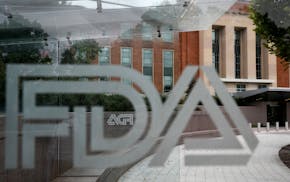Xcel Energy Inc. says it will begin flying drones to inspect power lines and other energy facilities.
The utility said Tuesday that it won approval from the Federal Aviation Administration to operate the small, unmanned aircraft at low altitude in less-populated regions and within an operator's line of sight.
Workers likely will use the aircraft to inspect hard-to-reach and environmentally sensitive areas, although the scope and timing of the program are not yet certain, said Michael Lamb, vice president of operating services for Xcel.
"We don't know how we are going to use drones yet," Lamb said in an interview.
Drones will be used in less-populated areas, but Lamb said it is "a real open question" how that will be defined. The company plans to fly the aircraft only above its properties or easements.
One likely use will be to assess damage to power lines after storms, but Lamb said the company first plans to study the best uses of the technology and then conduct trials, probably this summer. Drones equipped with cameras and sensors may have a range of uses, including detecting leaks on natural gas pipelines, he said.
Lamb said Xcel recently flew a drone inside a massive boiler at the Sherco power plant in Becker, Minn., to inspect interior components without sending workers inside. Once drones are deployed out of doors, they likely will be used across Xcel's eight-state service area, including Minnesota, he said.
Xcel is one of nearly 400 companies approved by the FAA for commercial drone use. The Minneapolis-based utility plans to use an electric-powered drone with eight rotors. It will fly at less than 57 miles per hour, operate for just 30 minutes or until its batteries drain to 25 percent and go no higher than 400 feet, according to FAA filings.
Xcel offered possible locations for the flights to the FAA, but they were not disclosed publicly, and the utility said its plans are not certain anyway. Lamb said Xcel has no current plans to experiment with drones flying beyond the line of sight or in urban areas.
Federal officials recently said they will work with BNSF Railway to test the first drones making beyond line-of-sight flights for commercial purposes. News network CNN plans to test line-of-sight flights in urban areas, and drone maker PrecisionHawk is testing expanded cropland monitoring, the FAA said.
David Shaffer • 612-673-7090 Twitter: @ShafferStrib

Remnants of bird flu virus found in pasteurized milk, FDA says
Timberwolves dispute between Taylor and Lore, Rodriguez over ownership moves to mediation
Tesla 1Q profit falls 55%, but stock jumps as company moves to speed production of cheaper vehicles
Montana minor league baseball team in dispute with National Park Service over arrowhead logo
